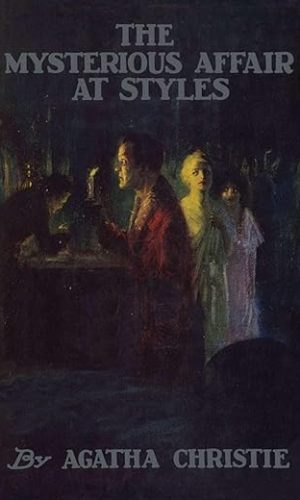Beware of Pity
£0.90
Lieutenant Anton Hofmiller, an Austro-Hungarian cavalry officer stationed far from home, is invited to a lavish party at the mansion of a rich Hungarian landowner, Lajos. In a world of luxurious living far removed from the bare life at the barracks, Anton meets Edith, the daughter of the host, and spontaneously asks her for a dance. When he realizes a sickness has left her crippled for life, deep compassion for her overtakes him, leading Edith to fall in love with him. Soon Anton is drawn into a vortex of events and emotions quite unforeseen, as pity and guilt inexorably implicate him in a well-meaning intention that tragically goes wrong.
Read more
Additional information
| Publisher | Rupa Publications (1 Mar. 2018) |
|---|---|
| Language | English |
| File size | 1151 KB |
| Text-to-Speech | Enabled |
| Screen Reader | Supported |
| Enhanced typesetting | Enabled |
| X-Ray | Not Enabled |
| Word Wise | Enabled |
| Sticky notes | On Kindle Scribe |
| Print length | 448 pages |









by Antenna
Set in the Austro-Hungarian Empire just before the outbreak of the First World War, a story which you might expect to find dated proves very gripping. It is written from the viewpoint of Anton Hofmiller, as he looks back ruefully to the time when, as a young cavalry officer, emotionally undeveloped after spending his adolescence in army training, he was first flattered to be wined, dined and treated with unwonted respect in the house of a wealthy local aristocrat, then moved by the plight of the teenage daughter of the house, paralysed by an unspecified illness.
Although you may guess the general direction of the tale it is remarkable for the depth with which Zweig explores the narrator’s complex emotions, and for the vivid evocation of a world about to end – the privileged, snobbish, ritualistic ostrich-like world of the ossified Austro-Hungarian army. He describes with great realism the joys of riding in close formation with one’s men, or galloping freely across the countryside, the huge social pressure to conform in this community rife with gossip and banter bordering on bullying. The book reminds me strongly of Roth’s “The Radestky March”.
If the style sometimes seems anti-semitic, this must be a reflection of the times, since Zweig was himself a Jew. I admit to finding the emotional intensity overwhelming at times, although Zweig has a gift for taking you to the limit of endurance and then introducing a fresh development which releases the tension and shifts you to a contrasting mood – which may in turn become too much. In view of Zweig’s suicide during World War 2, a few years after this book was written, one wonders how much it reflects the overwrought emotional rollercoaster of his own thoughts.
I understand why some reviewers feel the plot is too slight for a full length novel, but on balance Zweig “carries it off” as a psychological study and period piece. I could have done without the “frame” device used, apparently quite popular in the early C20, i.e. to commence with another narrator describing how he meets Hofmiller who implausibly recounts the story in great detail.
Recommended for reading on Kindle.
by Lady Fancifull
The theme of Stefan Zweig’s only full length novel published in the author’s lifetime explores how good intentions may have devastating consequences. Sentimental feeling, the desire to protect another from hurt, may lead ‘pity’ to protect another from a harsh, unacceptable reality, and offer the lies of denial.
Anton Hofmiller is a rather impressionable, good-hearted, though initially not particularly deep-thinking young man. He is a cavalry officer with the Austrian army, shortly before the First World War and meets a man, Kekesfalva, who fulfils a kind of idealised father figure role for him, a man he believes is a Hungarian nobleman. Hofmiller is invited to a dinner party and dance at Kekesfalva’s mansion, and inflicts an unknowing wound on his host’s daughter, Edith, believing he is behaving socially with great correctness. He invites the seated Edith to dance. However, the once vibrant and active young woman is now crippled through an infection, and has been so, for some years.
Anton’s heart is opened by pity, and he begins to resonate feelingly with the suffering of humanity. Unfortunately, this sentiment, and the desire to spare another from their pain and suffering, leads him to a series of wrong actions, which, though undertaken with the best of intentions, will prove to have outcomes as harmful and deadly as if he had deliberately and wilfully set out to inflict suffering. Having the imagination and empathy to feel another’s pain, ‘pity’ prevents him from allowing the other the dignity of facing the truth.
Hofmiller’s inability to take a clearer, wider perspective, and his tendency to see only a partial perspective of the truth is played with, examined, within the structure of the novel, which begins with a framing device, on the eve of the Second World War:
Hofmiller is now a highly decorated soldier from his history in the First War. He is introduced to a writer, who is as little interested in meeting him as he is in meeting that writer. The two are brought together by a man who obsessively fawns on celebrity. The writer, (surely a surrogate for Zweig himself) is a little in awe of this hero. United by their mutual embarrassment with the celebrity hound, Hofmiller ends up telling the author the story which forms the narrative of ‘Beware of Pity’. Zweig, as the author, presents the meeting with Hofmiller, and Hofmiller’s debunking of his own supposed bravery, as a foreword to his book, ‘Beware of Pity’. This is already telling us that ‘truth’ depends on where one stands, and that what might be seen, from the observation of actions only, to be one thing, might be quite another, once history, and psychology are understood. And it is no coincidence that Zweig understands psychology, and the divided self, so well – he and Freud had corresponded for some decades, and the interior life, the twists and oppositions between conscience, consciousness and the unconscious and instinctual responses occur all through this book
There also are other ‘storytellers’ within Hofmiller’s own tale : just as Hofmiller disabuses the writer from his illusions, Doctor Condor, the properly compassionate, pragmatic, facing the pain of truth physician, takes part of the narrative within the narrative, telling Hofmiller the story which will force him to see certain truths. It is these ‘truths’ which will unfortunately lead the officer into untruths, in order to protect the Kekesfalvas from the harshness of reality
Beware of Pity was published in 1939. Its original German title translated as ‘The Heart’s Impatience’ – also a good one, as it is Heart, untempered by Reason’s ability to foresee consequences, which leads to wrongdoing, despite ‘the best’ of intentions.
“There are two kinds of pity. One, the weak and sentimental kind, which really no more than the heart’s impatience to be rid as quickly as possible of the painful emotion aroused by the sight of another’s unhappiness, that pity which is not compassion, but only an instinctive desire to fortify one’s own soul against the sufferings of another; and the other, the only kind that counts, the unsentimental but creative kind, which knows what it is about and is determined to hold out, in patience and forbearance, to the very limit of its strength and beyond”